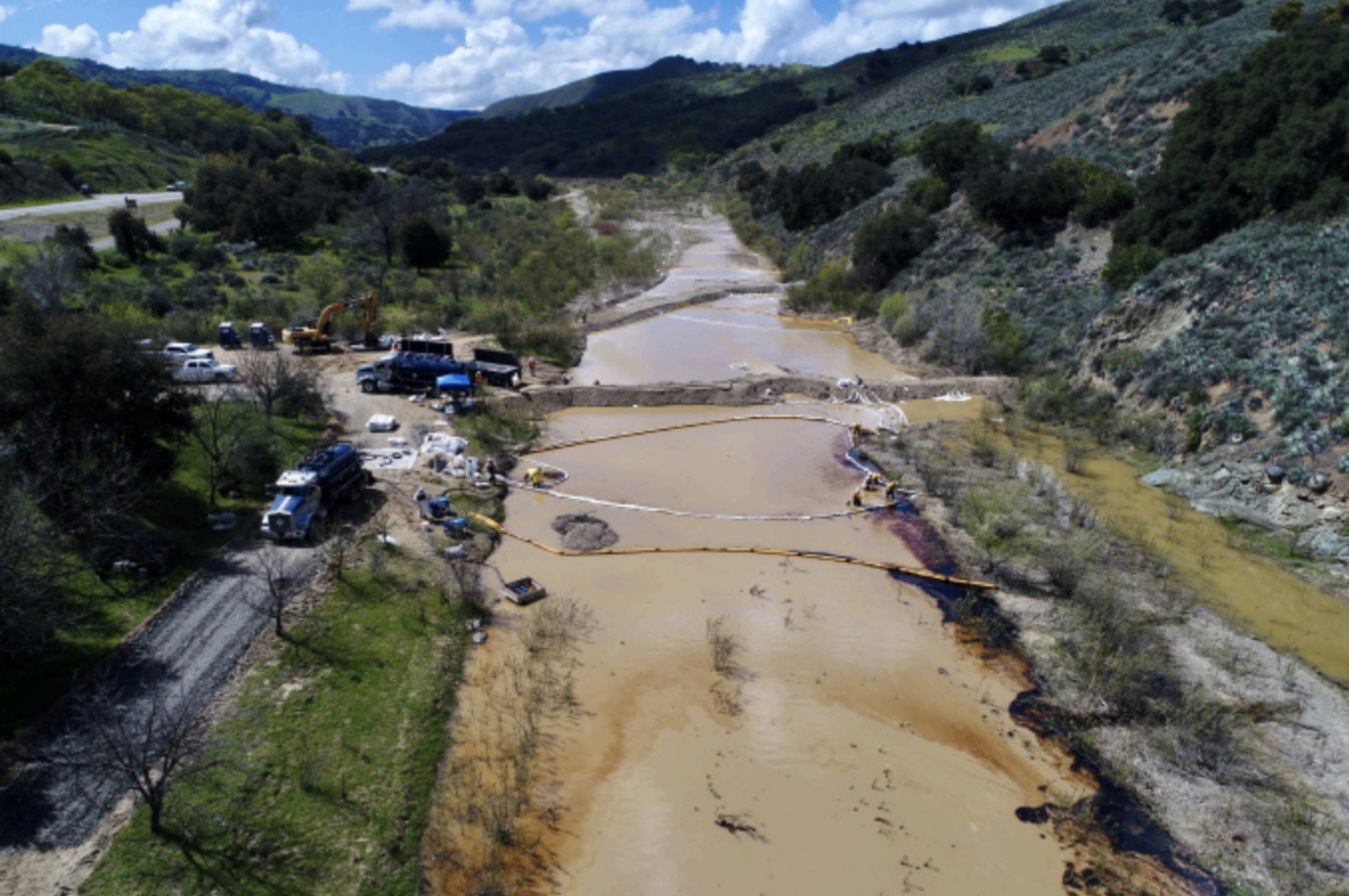Driver Criminally Charged in Cuyama Oil Truck Spill
Jesse Villasana Faces Five Misdemeanor Charges for Last Year’s 4,533-Gallon Spill on State Route 166

The truck driver who flipped his tank trailer off State Route 166 and spilled crude oil into the Cuyama River a year ago was charged with five misdemeanors by the Santa Barbara County District Attorney on March 19. The accident, and the $80,000 paid by the truck’s owner last month in a federal EPA settlement, could be another knock against ExxonMobil’s proposal to truck oil along the narrow winding track that is SR 166.
After the 2015 Refugio Oil spill shut down Plains All American’s pipeline from Gaviota, ExxonMobil proposed in 2017 to move crude from its Las Flores Canyon facility via 140 oil-truck trips up the 101 to Santa Maria and then along the 166. The proposal was put on hold after Phillips 66 announced last year that it would switch its refinery in Martinez from fossil fuels to alternative fuels in 2023. Before that announcement and during the finalization of Exxon’s environmental impact report, the likelihood of a spill was called minimal. The final document, released in July 2020, stated an “insignificant” statistical likelihood of increased accidents on SR 166 from the additional truck trips. A spill of five gallons or more was estimated to occur once in 16 years, or once every 24 years if mitigation measures were taken.
In the oil spill on March 21, 2020, Jesse Villasana was headed west toward Santa Maria at about 4:30 a.m., driving a 2012 Western three-axle semi, the environmental report quotes from the California Highway Patrol investigation. As he drove into a broad left-hand bend just past Aliso Creek, the trailer began to sway from side to side. The truck rolled onto the right shoulder of the 166, and Villasana pulled the wheel to the left, which uncoupled his tractor from the trailer it was pulling. The trailer and its tank containing 6,678 gallons of crude oil rolled to the right and down the bank, and 4,533 gallons broke loose, some of it flowing into the Cuyama River.
Linda Krop, chief counsel for Santa Barbara’s Environmental Defense Center, said the accident remained very relevant to concerns over Exxon’s proposal, no matter the direction of travel. “The road is so dangerous,” she said. “It already has so much truck traffic, including a lot of oil tanker trucks. That’s the risk: too many oil tanker trucks.”
The road customarily sees about 3,650 cars, trucks, and rigs coming and going, the environmental report states. According to the Center for Biological Diversity, the five years before the spill saw 216 large truck collisions, including between tanker trucks, tractor-trailers, and box trucks. No oil spills were reported.
State Route 166 is just one of several ways that millions of barrels of crude get to refineries in Kern, Santa Maria, and up to the Bay Area. An existing pipeline from Platform Irene off Lompoc also heads toward Santa Maria. California’s Division of Oil, Gas, and Geothermal Resources (DOGGR) in 2018 reported that more than 3.3 million barrels of oil are produced annually in Santa Barbara County, as well as 2.7 million Mcf (or thousand cubic feet) of gas and 98.4 million barrels of produced water (usually brine or oil-contaminated water pulled up with the crude as it is pumped upward).
For oil production in Santa Barbara County, the price per barrel is another determinative factor, said Errin Briggs, a planner with the county’s Energy Division. Techniques such as cyclic-steam injection are more expensive, and when prices dipped to $20 and $30 a barrel, interest in production waned. Now that it’s back up to $64 per barrel, interest in oil production should return, he said, “but I wouldn’t expect anything dramatic at this price level.”
The county District Attorney’s complaint alleges that Jesse Villasana unlawfully spilled petroleum into the river, having driven too fast “at night down a one-lane, curved road” and making an unsafe turning movement. Deputy District Attorney Morgan Lucas said the case was filed in response to a referral from California Fish & Wildlife, which accounts for the two counts of killing a belted kingfisher and a mallard, in violation of the state Fish & Game Code. All charges are misdemeanors that carry penalties of up to a year in prison and fines of up to $1,000. Villasana has not yet appeared in the case, and an arraignment is set for June in Santa Maria.



